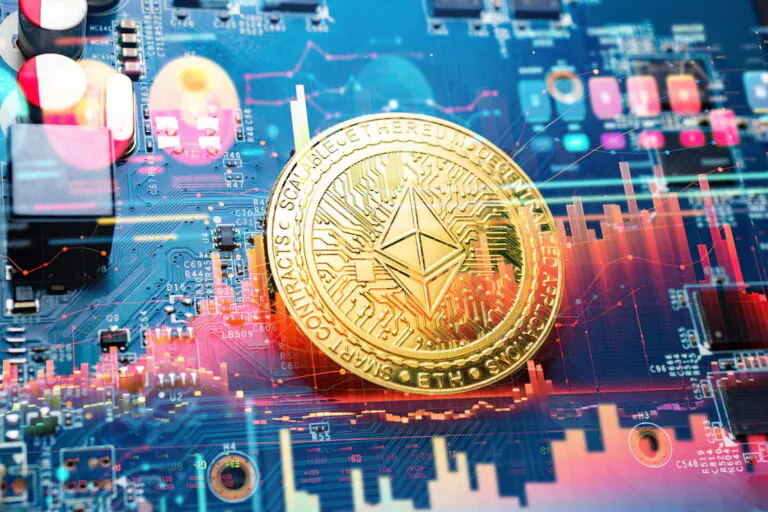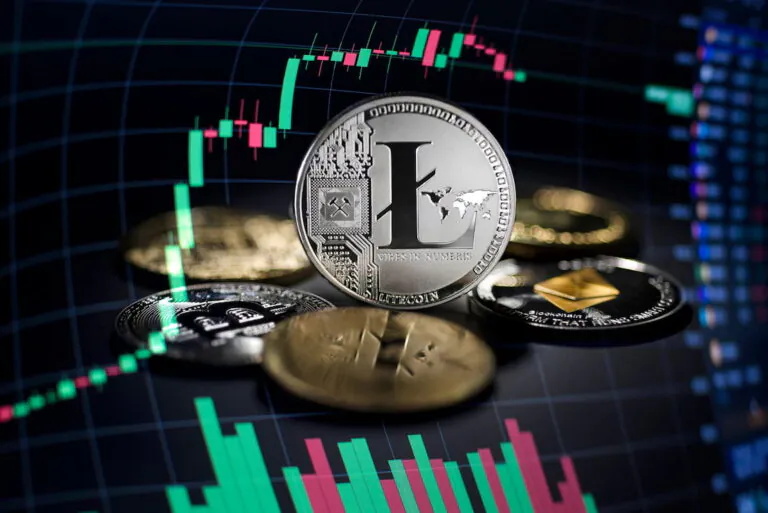The Ethereum blockchain is a distributed ledger system designed to create decentralized applications. One of its main goals was to facilitate money transfers and get rid of intermediaries during transactions in global financial systems. One of the cofounders of Ethereum is Anthony Di Iorio.

Cryptocurrency Decred (DCR): history of creation, principle of operation, features, development prospects of the coin
What is Decred (DCR)?
Decred is a blockchain-based cryptocurrency that emphasizes decentralized community governance and sustainable development funding.
DCR uses a mixed Proof-of-Work (PoW) and Proof-of-Stake (PoS) mining system, which ensures that any changes to the platform are made only with community participation.
Many community members consider Decred to be exactly the cryptocurrency that was originally conceived in the first cryptocurrency, Bitcoin. These people talk about how Decred is nothing less than the pinnacle of a decentralized peer-to-peer network for decision-making, while responding to all sorts of attacks and accepting requests from the community to add new features.
Who created Decred?
The Decred team is mostly anonymous. The founder is said to be a Bitcointalk forum user named “Tacotime”, who first mentioned the idea of the DCR cryptocurrency on the forum in 2013. Shortly thereafter, Tacotime published a 2013 white paper under the name Adam McKenzie. It is not known if this is a pseudonym similar to Satoshi Nakamoto or Tacotime’s real name. In the white paper, the author named the project “Memcoin2”, or MC2 for short.
Tacotime later worked with another Bitcointalk user (_ingsoc) to further develop what eventually became known as Decred. It is noteworthy that before the official development of Decred began in 2014, Tacotime participated in the development of another major cryptocurrency – Monero.
In 2014, Tacotime approached Company Zero and its CEO, Jake Yocom-Piatt, with a request to obtain funding and other resources to bring the concept to life.
In December 2015, Yocom-Piatt officially announced the development of Decred and spoke in detail about its upcoming launch. The development was funded exclusively by Company Zero, and no coins were distributed for free among developers.
Since Decred is designed to work as a decentralized autonomous organization (DAO), which means that anyone can propose system changes and vote for them, temporarily placing part of their assets. In accordance with this spirit, the founders eventually became less visible in the development of the cryptocurrency.
How Decred Works
Since Decred’s core technology is the open source Bitcoin code base, the cryptocurrency offers everything that Bitcoin has to offer, but with various modifications.
Hybrid Consensus Algorithm: PoW/PoS
DCR is a combination of Proof-of-Work (PoW) and Proof-of-Stake (PoS) consensus algorithms that efficiently synchronize a distributed network of computers on a blockchain.
Through the PoW mechanism miners use their resources to solve complex mathematical puzzles, including transaction verification, and then add blocks to the blockchain. In addition, the PoS mechanism allows DCR participants to confirm these transactions, encouraging participation in the governance of the Decred network.
When DCR holders stake their coins, they receive a “ticket”, a non-transferable asset embedded on the Decred blockchain. There are 20 tickets in each block, five of these tickets are randomly selected, and then their owners check the blocks proposed by the miners. As soon as the block is calculated and added to the network, all parties involved in this chain receive a reward: miners receive 60%, stake holders receive 30%, and the treasury receives 10%.
Politeia
Decred implemented Politeia to encourage new ideas from all parties involved in the blockchain and create a fair voting system that accepts and implements said ideas.
Users may use Politeia’s web-based public offering platform to suggest possible policy updates or changes. This platform allows users to submit, track, and discuss proposed changes to the Decred ecosystem.
Lightning Network for Instant Transactions
Decred is on track to implement the Lightning Network, an improvement that several other cryptocurrencies have adopted. Essentially, the Lightning Network is an off-chain payment method, which reduces network congestion and transaction processing speed. Two users who regularly transact must open a third account, which is a locked cell where they each deposit an equal amount. When these parties want to make a deal, they simply have to send notes to each other, changing the balance of funds in the cell.
For example, it looks like this: User 1 and User 2 each contribute 10 DCR to the Lightning Network mailbox, which in total gives 20 DCR. If User 1 wants to pay User 2 DCR, he can send User 2 a note that updates the DCR allocation to 8 to User 1, 12 to User 2. Both of these users can make transactions back and forth in this cell within 20 DCR without sending a note to the blockchain.
Because the Lightning network is based on bills of exchange, transactions are instantaneous and do not require block time to validate. These transactions can also be considered micropayments for a fraction of a coin. In addition, this allows the blockchain to be more scalable as it has to process fewer transactions.
Decred Features
- Security. Decred has shown that a malicious attack can be more expensive compared to pure PoW due to its hybrid PoW + PoS model that evens out incentives between voters and miners. This is of great importance for long-term stability.
- Adaptability. In terms of adaptability, Decred has built-in formalized governance that allows it to make changes to its consensus rules while avoiding hard forks.
- Sustainability. The way Decred is funded is through block rewards. In other words, only interested parties with real investments in the game can vote to allow spending funds from the treasury, which guarantees the sustainability of the project in the long term.
Decred’s self-funding solution has created a situation that minimizes the disadvantages associated with traditional funding of cryptocurrency projects. In other words, about 10% of all block rewards on the Decred blockchain are distributed to the treasury. The latter stores resources for the future development of the project.
Decred Token (DCR)
The DCR token is the center of the Decred ecosystem, where each token represents the right to vote. The maximum number of DCR coins available for mining is 21,000,000. The circulation of DCR coins as of August 2022 is ⅔ of this amount, namely 14,250,626.93 DCR.
The Decred coin (DCR) was launched in 2016 with a starting price of $0.95. Its price peaked at $246.9 in April 2021 and then dropped again. In August 2022, DCR is trading at $35.12.
How and where to buy Decred? Decred Decentralized Exchange (DCRDEX)
DCR coin is available for trading on multiple exchanges including KuCoin, Binance and Huobi. However, Decred has managed to create its own personal decentralized exchange (DEX), known as DCRDEX. The exchange uses atomic swaps with Decred-Bitcoin, Ethereum and Litecoin. DEX can be downloaded without permission for use as a desktop client. DCRDEX offers no trading fees and uses Lightning Network payment channels to enable scaling with future adoption.
In addition to well-known crypto exchanges, you can also buy Decred crypto on crypto exchange websites, for example, on our website Coin24.io.
Decred Wallets
Decred has several forms of wallets for users: desktop and mobile wallets, as well as software compatible with hardware wallets. They also have a crypto wallet which is still under development. In addition, Decred supports third party wallets such as Coinomi, Everwallet, and more.
The desktop graphical user interface (GUI) that interacts with DCRWallet is called Decredition. This wallet app is required to download the entire Decred blockchain. It also requires sufficient space on the device’s hard drive. This gives users the opportunity to become miners, receive rewards, vote and have management rights.
As for the mobile wallet, it is available for download on Android and iOS. It does not have the ability to download the entire Decred blockchain, unlike the Decred desktop wallet. Instead, the Decred mobile wallet operates in SPV (Simple Payment Verification) mode, which reduces the load on resources and data plans from the phone. Notably, users cannot vote on proposals using the Decred mobile wallet.
What is the future of Decred? DCR Price Forecast
Decred introduced several important innovations with its launch in 2016. In a way, Decred’s consensus system combines the best of both worlds – the proven security of a PoW system and the more democratic aspects of a PoS governance system.
However, the new generation of PoS cryptocurrencies is thriving and this could affect Decred’s value proposition. First, there is increasing attention to the energy-intensive nature of PoW blockchains and their impact on the environment. For this reason, institutions and even some retail investors may choose to invest in newly developed PoS-only blockchains such as Cardano, Algorand or Ethereum 2.0. All these three projects either include smart contracts or plan to allow them, which will further expand the possibilities of developing DeFi applications and give them many new use cases. Like Decred, Algorand also has a democratized management system and a PoS consensus system based on pseudo-random voting.
Despite the above, the Decred cryptocurrency has its own community that believes in the bright future of this coin, because its main goal is to ensure transparency and at the same time confidentiality.
Speaking about the forecasts for the DCR rate, many cryptanalysts still predict an increase in the price of the coin in the near future:
- Wallet Investor. Based on the current price movement and our DCR price prediction, a long-term increase of $324.75 per coin is expected in 2026.
- Digital Coin Price. According to our Decred forecast, DCR price could cross $77.31 by the end of 2022 and $106.20 by 2026.
- Trading Beasts. Based on Decred's price analysis and forecasts, DCR's price could reflect a short-term rally as well as long-term potential gains, and Decred's (DCR) price increase could reach $165 by the end of 2022.
- Crypto Ground. Based on our price predictions, Decred coin has a great future in the crypto space. It may have been slightly bearish and the DCR price has dropped by about $136, but around 2024 it will see a bull run and its value could rise to $174.04.
- GOV Capital. Regardless of its adoption, the Decred cryptocurrency has been in a heat wave until January 2022. Based on DCR price predictions, the drop is expected to end soon, say by 2022, at best $154.43, as expected by the market.
- Reddit community. The Decred market could grow 3x in 6 years, which means that by 2026, based on DCR price forecast and algorithmic analysis, Decred could reflect a clear rally around $110 in the cryptocurrency market.
Whether these forecasts will be real, we will see in the near future. But whether it is worth investing your assets in Decred is your decision.
Start your crypto exchange with Coin24

Exchange BTC, ETH, USDT and more — cash or card

Secure and fast crypto exchange since 2018



